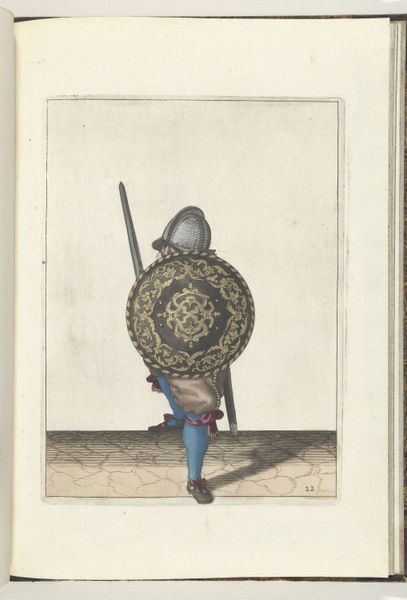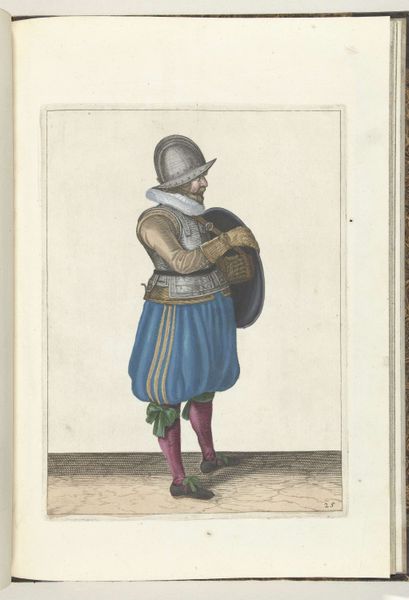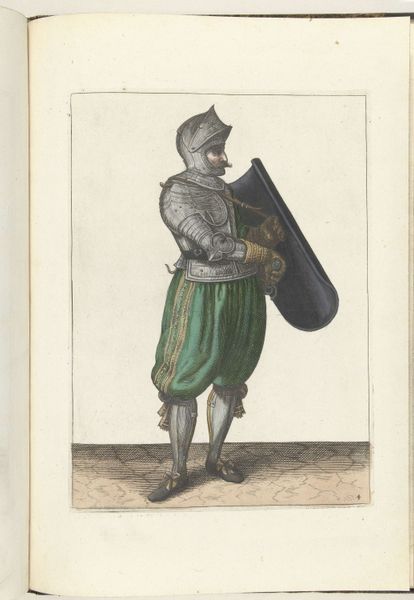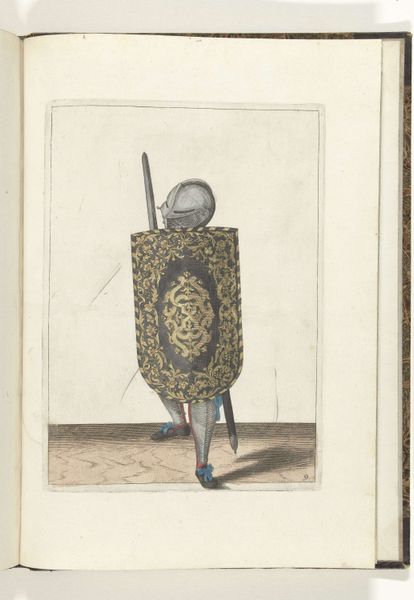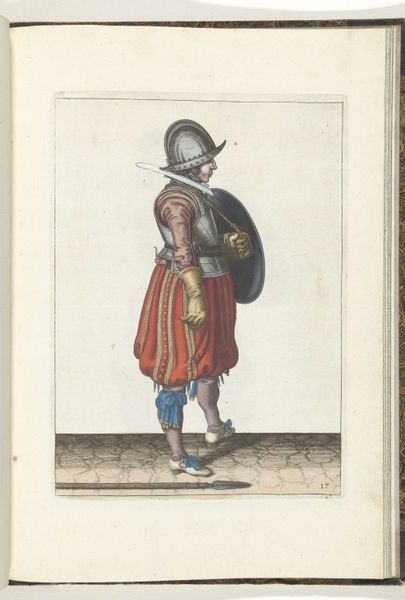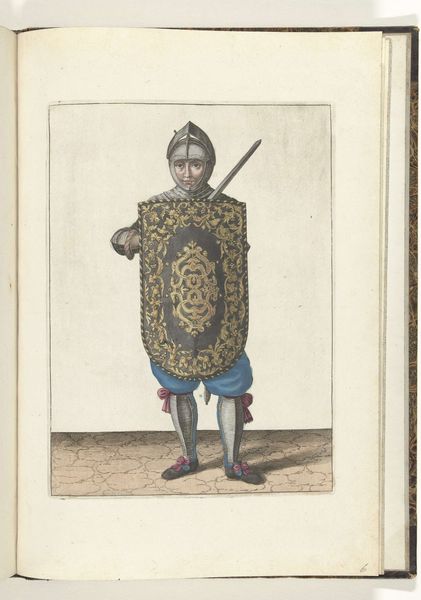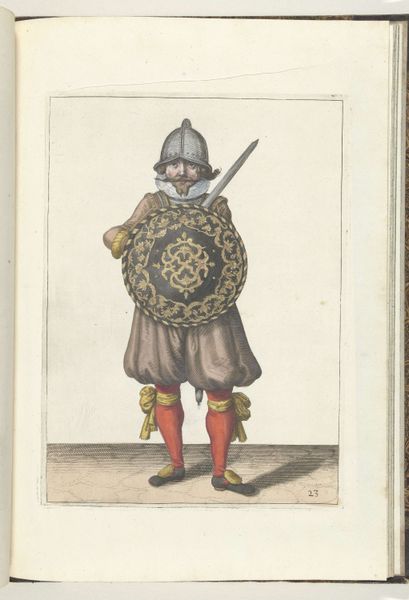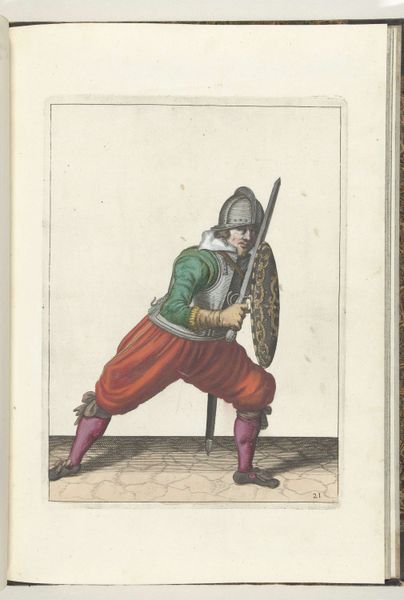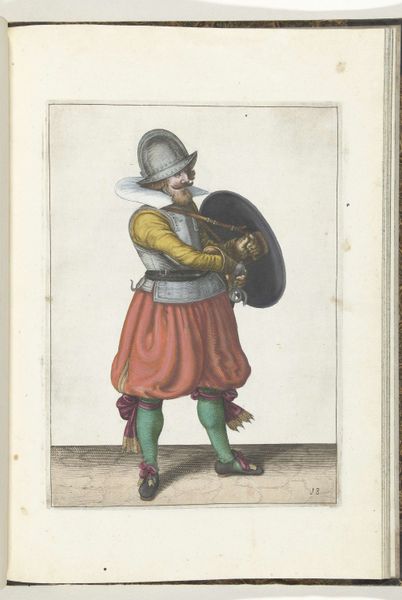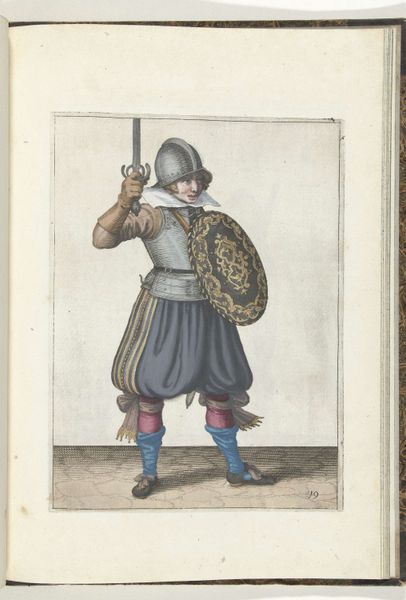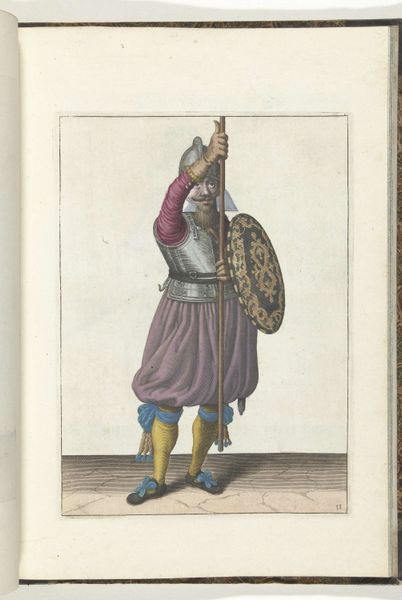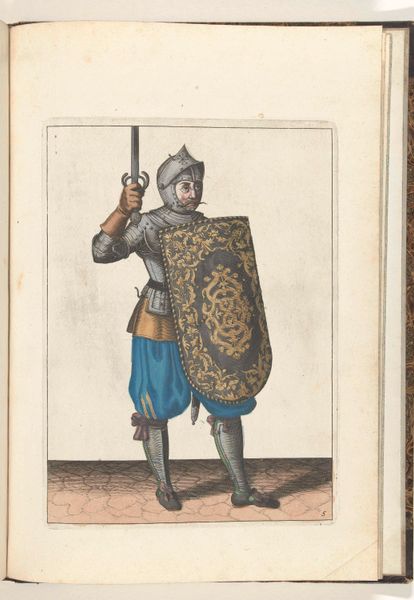
De exercitie met de targe en rapier: de soldaat hangt de targe terug op zijn rug, (nr. 13), 1618 1616 - 1618
0:00
0:00
drawing, coloured-pencil
#
portrait
#
drawing
#
coloured-pencil
#
weapon
#
figuration
#
11_renaissance
#
coloured pencil
#
sketchbook drawing
#
watercolour illustration
#
genre-painting
Dimensions: height 255 mm, width 187 mm
Copyright: Rijks Museum: Open Domain
Curator: Adam van Breen created this drawing titled "De exercitie met de targe en rapier: de soldaat hangt de targe terug op zijn rug" around 1618. It's done with colored pencil, portraying a soldier with a targe shield. Editor: Wow, it’s amazing. The textures look so smooth, and the way the shield hangs…he looks so done! The slight sag in his shoulders, as if the weight of battle—or maybe just practice—has finally caught up to him. You can feel his fatigue! Curator: Indeed. Targes were fascinating. They weren’t just simple shields; they were badges of status and cultural identity, particularly among Scottish Highlanders. The designs woven onto them often carried clan symbols or personal emblems, marking a warrior’s lineage. Editor: Oh, definitely a family thing going on there! What about his uniform though, those colours seem particularly jolly! Were these uniforms common or specific to a particular unit or perhaps even just someone's taste for fashionable military attire? It strikes me as bold. Curator: These colors speak volumes about the fashion and social dynamics of the early 17th century. This image echoes shifts in the visual representations of military figures from this era as the line between military prowess and sartorial elegance began to blur. It’s not just armor, it’s self-fashioning. Editor: So true, it is this fascinating cross between function and pageantry—almost as if this particular soldier thought of it as one massive cosplay. Did the elaborate ornamentation on his shield and armor, plus those striking colours, play a psychological role? Maybe intimidating the opponent or just boosting morale? Curator: Symbolism was paramount, especially in martial contexts. Beyond battlefield utility, this uniform communicated messages of power and invincibility, and probably a good measure of regimental pride too! What’s so neat is the idea of protection that has morphed into these visible proclamations of worth. It shows the fascinating way cultures construct their visual vocabulary around these key roles. Editor: Makes me wonder about the weight he’s carrying. He's like all of us, post-battle or post-workday. You know, that moment you kick off your shoes and sigh. Is this a warrior just weary from the rituals and performance required of his role? Or maybe he really just wants a nice ale. Curator: Precisely! The real emotional depth comes not just from the symbolism of war and battle, but also the relatable human elements it evokes: duty, weariness, and perhaps even longing. I find it all rather charming. Editor: Absolutely, I agree. Thank you, let's get that man his pint.
Comments
No comments
Be the first to comment and join the conversation on the ultimate creative platform.
